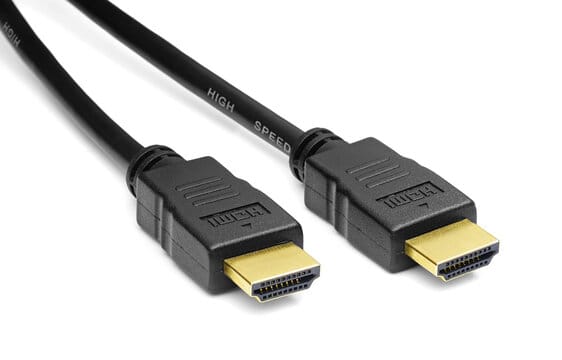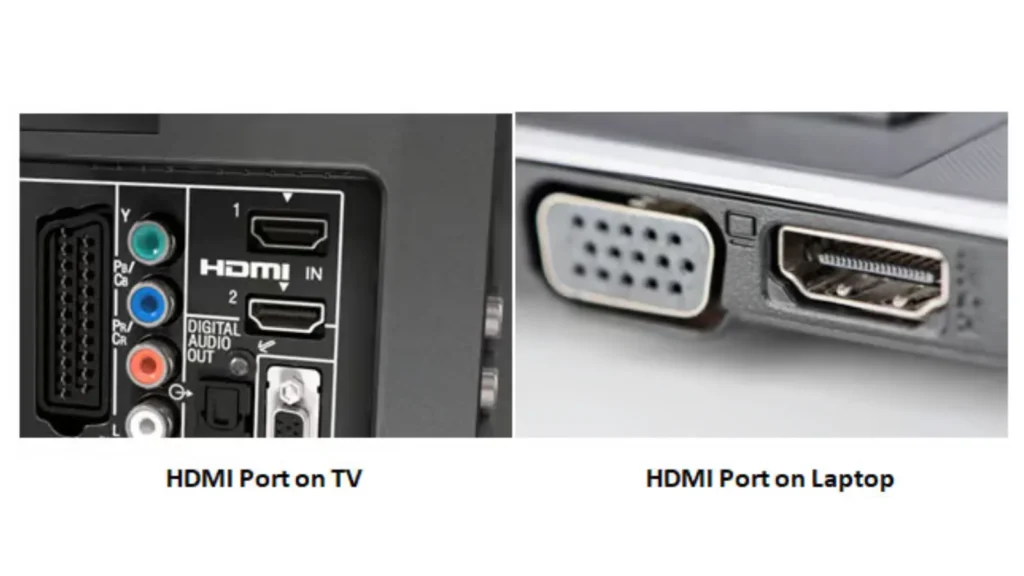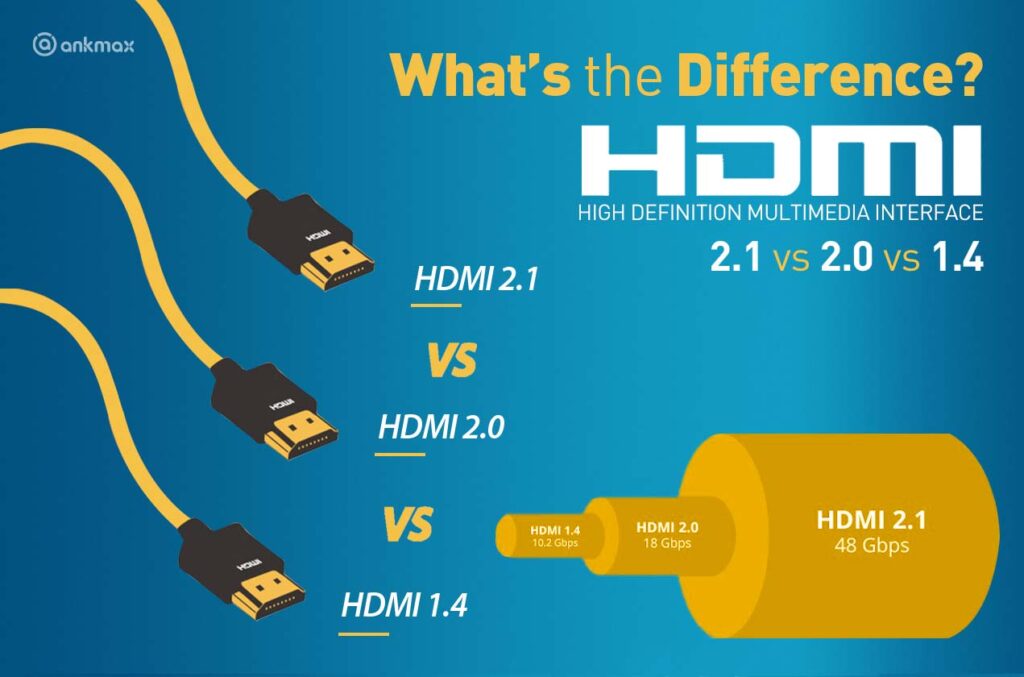
In today’s digital age, the HDMI cable plays a crucial role in connecting various devices to transmit high-quality audio and video. This guide aims to give a deep understanding of HDMI cables. It covers their types, specs, and functions. Whether you’re a tech enthusiast or a casual user, this article will help you navigate the world of HDMI technology.
What is an HDMI Cable?
Definition of HDMI Cable
An HDMI cable, or High-Definition Multimedia Interface cable, is a standard cable. It transmits high-definition video and audio between devices. This single cable simplifies connections. It carries both audio and video through one HDMI connector, eliminating the need for multiple cables. HDMI cables are essential for connecting HDMI devices, like laptops, consoles, and TVs.
Overview of the High-Definition Multimedia Interface
The High-Definition Multimedia Interface (HDMI) is a popular multimedia interface. It supports high-quality video and audio transmission. Launched in 2003, HDMI has evolved through various versions, including HDMI 1.0, HDMI 1.4, HDMI 2.0, and the latest HDMI 2.1. Each version of HDMI adds new features and improvements. This enhances the user experience across HDMI devices.
How HDMI Works: The Basics of HDMI Signal
HDMI works by transmitting uncompressed audio and video signals through a high-speed HDMI cable. The HDMI signal is transmitted in a digital format, ensuring minimal loss of quality. This digital connection supports various resolutions, including 4K and 8K, providing crystal-clear images. It’s crucial to understand the HDMI signal for anyone using HDMI in their multimedia setup.
Types of HDMI Cables
Different Types of HDMI Cables Explained
There are several types of HDMI cables available, each designed for specific applications and devices. Standard HDMI cables are for general use. High-speed HDMI cables support 4K video and higher refresh rates. Also, specialty cables like micro HDMI and mini HDMI work with specific devices. They ensure compatibility across various HDMI connectors.
HDMI 1.4 vs. HDMI 2.0 vs. HDMI 2.1

Understanding the differences between HDMI 1.4, HDMI 2.0, and HDMI 2.1 is vital for selecting the right HDMI cable for your needs. HDMI 1.4 introduced support for 4K video, while HDMI 2.0 enhanced bandwidth to support higher resolutions and frame rates. HDMI 2.1 is the latest version of HDMI. It supports 8K video and has advanced features like HDMI eARC and VRR. It has ultra-high-speed capabilities.
Understanding HDMI Alt Mode and Its Uses
HDMI Alt Mode is a feature that allows HDMI signals to be transmitted over USB Type-C connections. This innovative approach lets laptops and smartphones connect to HDMI displays using a single USB-C cable. HDMI Alt Mode makes HDMI connections more versatile. It simplifies connecting HDMI devices and reduces clutter in your setup.
HDMI Connectors and Ports
Types of HDMI Connectors
HDMI connectors come in various types, each designed for specific applications and devices. The most common HDMI connector is the standard HDMI Type A, typically found on most televisions and laptops. Other types include mini HDMI and micro HDMI, which are popular in smaller devices like tablets and cameras. Knowing the types of HDMI connectors helps ensure compatibility in your setup.
Identifying HDMI Ports on Devices

Identifying HDMI ports on devices is crucial for setting up a successful HDMI connection. Most modern electronics, such as laptops, gaming consoles, and televisions, feature at least one HDMI port, often labeled as HDMI IN or HDMI OUT. Knowing where to find the HDMI ports allows users to connect their HDMI devices. This makes the most of the high-definition multimedia interface for seamless audio and video.
Single HDMI vs. HDMI Extender Options
When using HDMI connections, users must choose. They can use a single HDMI cable or try HDMI extenders. A single HDMI cable simplifies connections, providing a straightforward solution for short distances. For long runs or complex setups, HDMI extenders can amplify the HDMI signal. This lets users maintain high-quality audio and video over greater distances. It ensures optimal performance in various environments.
Audio and Video Capabilities of HDMI
How HDMI Supports Audio and Video Transmission
HDMI technology excels at transmitting audio and video. Its digital signal is advanced. HDMI transmits uncompressed audio and video. This ensures high fidelity and clarity, which are vital for multimedia experiences. The HDMI standard supports 4K and 8K video and various audio formats. It is the top choice for modern AV setups.
Benefits of HDMI Audio Features
The audio features of HDMI provide significant benefits over traditional audio transmission methods. HDMI supports multiple audio channels, allowing for immersive surround sound experiences. Features like HDMI ARC (Audio Return Channel) and eARC (enhanced Audio Return Channel) let users send audio from their TV to an audio receiver. They simplify connections and improve audio quality in home theater systems. This makes it a versatile audio solution.
Understanding HDMI Specification for Audio Quality
Knowing the HDMI standard for audio quality is key. It ensures the best multimedia experience. Different HDMI versions, like 2.0 and 2.1, improve audio. They allow for higher sample rates and bit depths. Adhering to the HDMI standard ensures high-quality audio. It will enrich entertainment with clear, detailed sound.
Comparing HDMI with Other Interfaces
HDMI vs. DisplayPort: Key Differences

When evaluating HDMI against other interfaces like DisplayPort, several key differences emerge. HDMI is mainly used in consumer electronics. It transmits audio and video through a single cable. In contrast, DisplayPort is for computer displays. It has a higher bandwidth and can daisy-chain multiple monitors. HDMI has many versions, including 1.4 and 2.1. DisplayPort excels with higher resolutions and refresh rates. It is ideal for gamers and professionals who need high performance.
When to Use HDMI Over Other Connections
Choosing HDMI over other connections often depends on the multimedia needs. For most home theaters, standard HDMI cables are preferred. They work with laptops, TVs, and gaming consoles. HDMI supports audio and video formats. This ensures a seamless experience without extra cables. For high-def video and audio, HDMI is the best choice. It provides a simple connection that makes any multimedia setup easy.
Benefits of Using HDMI
Advantages of HDMI for Multimedia Interfaces
The advantages of using HDMI for multimedia interfaces are numerous. First, HDMI cables support uncompressed audio and video. This ensures the highest quality transmission. Also, multiple audio channels enable immersive surround sound. This enhances home entertainment systems. Also, the HDMI standard has features like the HDMI Ethernet channel. It allows for network connectivity through a single HDMI cable. This reduces cable clutter and simplifies device connections.
Why HDMI is the Standard for High-Definition Content
HDMI is the standard for high-definition content. Its specs and capabilities are robust. HDMI 2.0 and HDMI 2.1 support higher resolutions, like 4K and 8K, and advanced audio formats. HDMI cables, including micro and mini HDMI, are very versatile. They work with many devices. HDMI is the top choice for high-definition multimedia. It’s widely used by manufacturers and consumers.
Future of HDMI and Evolving Standards
The future of HDMI looks promising as evolving standards continue to enhance its capabilities. HDMI 2.1 introduced features like eARC and VRR. They cater to gamers and audiophiles. As display tech improves, supporting resolutions above 8K will be possible. HDMI will adapt to these advancements. Also, as HDMI licensing grows in importance, manufacturers must innovate. This will keep HDMI relevant in the fast-paced digital world.
FAQs
1. What is the purpose of HDMI?
HDMI sends high-quality video and audio between devices, like TVs, computers, and game consoles. It ensures smooth, clear content on your screen.
2. What does HDMI stand for?
HDMI stands for High-Definition Multimedia Interface. It’s a common technology used to connect modern devices for high-quality media sharing.
3. Do I need HDMI for my TV?
Yes, most modern TVs use HDMI to connect to other devices like streaming boxes or gaming consoles. It provides the best picture and sound quality.
4. Which is better, USB or HDMI?
HDMI is better for video and audio, while USB is mainly for data transfer and charging. For connecting a TV or monitor, HDMI is the better choice.
5. What type of HDMI is best for my TV?
For the best quality, go with HDMI 2.1, which supports 4K and 8K video. It’s ideal for modern TVs with high-definition displays.
Conclusion
In conclusion, the HDMI cable is vital for digital connectivity. It links various devices and ensures high-quality audio and video. Its standard method simplifies multimedia setups. It makes them easy for everyone, from tech fans to casual users. As HDMI technology evolves, it will add new features and standards. It will remain the top multimedia interface, meeting future audiovisual demands.

Hi, I’m Yousaf, a content writer with a passion for gadgets. I love exploring the latest in technology and turning complex details into easy-to-understand content. My goal is to help readers stay updated and make informed choices in the fast-evolving world of gadgets.